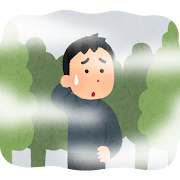Japanese Level 4, Activity #3: “Japanese” / “日本語” (Face-to-Face)

Image via Irasutoya
Description:
In this activity, students will practice responding to a variety of questions. These will be loose questions that are meant to help spark conversation. So it is okay if you don’t get through all of them or if you change them a bit to better fit what students want to talk about!
Semantic Topics:
Nakama 2, Chapter 1 through 3, storytelling, health, injuries, traveling, plans, future, follow-up questions
Products:
Practices:
Perspectives:
- Standard 1.1: Students engage in conversation, provide and obtain information, express feelings and emotions, and exchange opinions.
- Standard 1.3: Students present information, concepts, and ideas to an audience of listeners or readers on a variety of topics.
Idaho Content Standards for World Languages:
- COMM 1.1 – Interact and negotiate meaning (spoken, signed, written conversation) to share information, reactions, feelings, and opinions.
- COMM 3.1 – Present information, concepts, and ideas to inform, explain, persuade, and narrate on a variety of topics using appropriate media in the target language.
NCSSFL-ACTFL Can-Do Statements:
- I can tell stories about injuries and health, traveling, and future plans.
- I can ask others to tell me a story about injuries and heath, traveling, and future plans.
- I can ask follow-up questions about stories other people tell me.
Materials Needed:
Warm-Up
- Begin lab by asking students what they did last weekend.
ラボの最初に、先週末に何をしたかを生徒に尋ねます。 - On the next slide, introduce today’s topics as “health,” “travel,” and “future.” Provide an example of the main activity questions by telling a short story answering one question from each chapter. Encourage students to ask questions about your story!
次のスライドでは、今日のトピックを “健康”、”旅行”、”未来” として紹介します。各章の質問に答える短い話をすることで、主活動の質問の例を提示します。 生徒があなたの話について質問するように促します。
Main Activity
Chapter 1:
- What is one time you or someone you know had a bad injury? What happened? How did they treat it?
あなたか他の誰かがおおけがをしたのはいつですか。何がありましたか。どう対処しましたか?
- Have you ever gotten sick in class or at school? How did it go?
学校とか授業とか、病気になったことがありますか?どうでしたか?
Chapter 2:
- What was the last time you traveled for fun? Where did you go? What did you do?
最後に旅行を楽しんだのはいつですか。どこに行きましたか。何をしましたか。
- You have 1 hour to pack for a month-long trip. What are you taking?
一ヶ月の旅行の準備をして、一時間だけあります。何を持って行くんですか
Chapter 3:
- What are your plans after this semester?
今学期が終わってから、何か予定はありますか。
- “Enjoy the present” or “think of the future”, which is more important?
「今を楽しむこと」と「将来を考えること」と、どちらが大切なのか?
Wrap-Up
- What are everyone’s plans for the weekend?
ちなみに、今週末、何か予定はありますか。
End of Activity
- Read Can-Do statements once more and have students evaluate
their confidence. - できることを読んで、生徒に自信を評価 してもらいます。
- Encourage students to be honest in their self-evaluation. Pay attention, and try to use feedback for future activities!
- 生徒に自己評価に正直になるように勧めます。このフィードバックを将来のラボに使用してください。
NCSSFL-ACTFL Can-Do Statements:
- I can tell stories about injuries and health, traveling, and future plans.
- I can ask others to tell me a story about injuries and heath, traveling, and future plans.
- I can ask follow-up questions about stories other people tell me.

